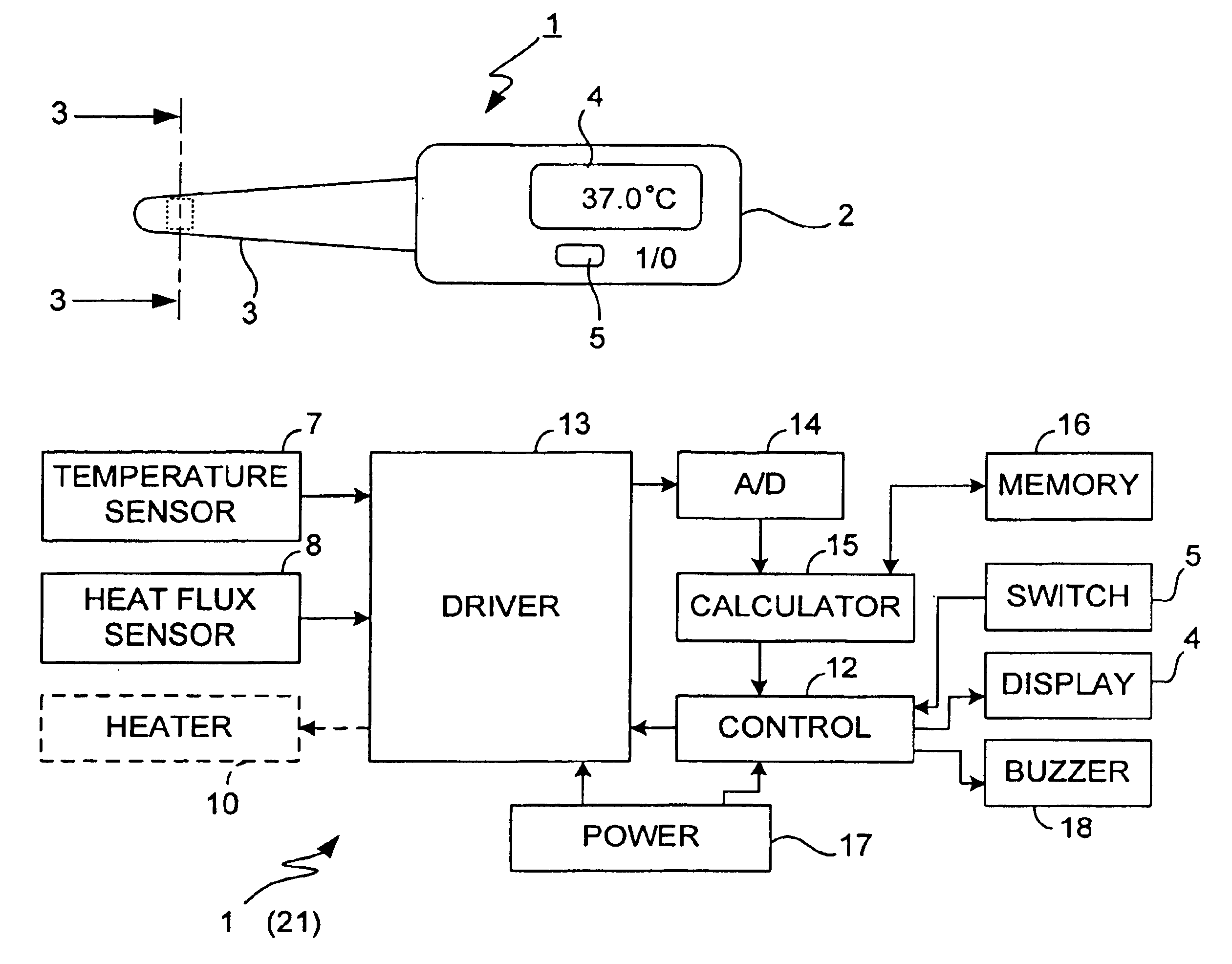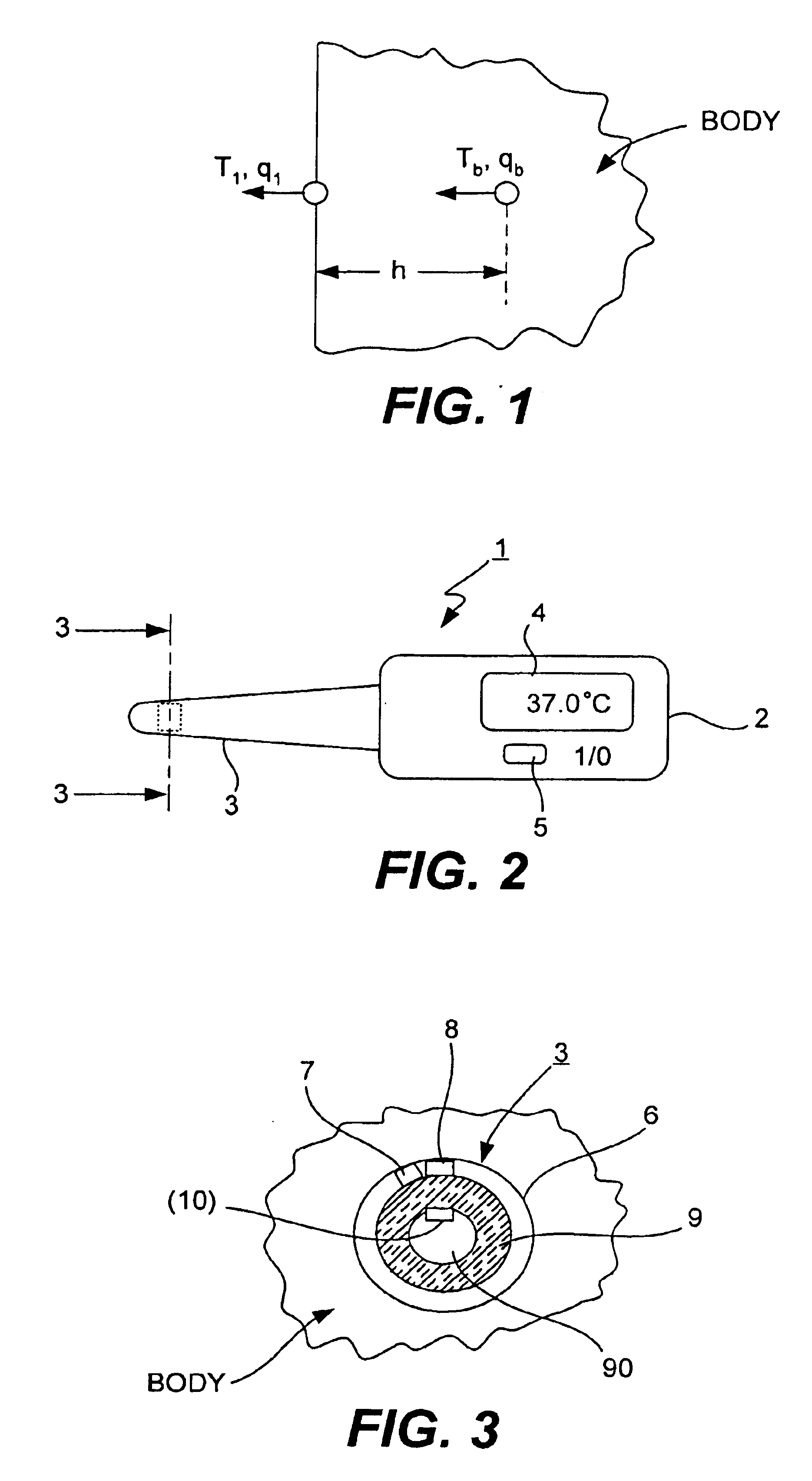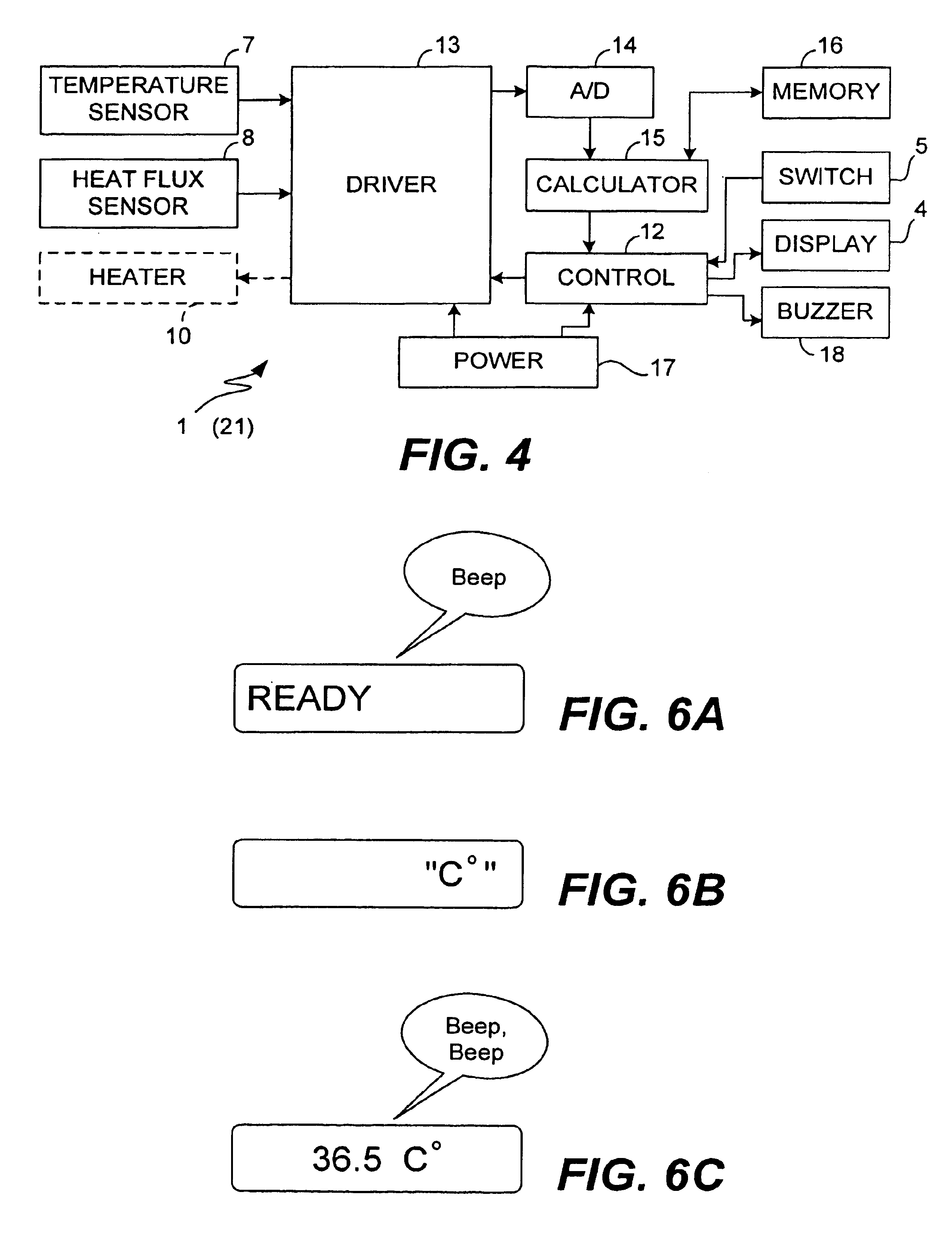Electronic clinical thermometer
a thermometer and electronic technology, applied in the field of electronic thermometers, can solve the problems of long computer time wasted, unstable solution, and inability to fully take into account individual variations of patients or environmental changes, and achieve the effect of accurately and quickly estimating the internal body temperatur
- Summary
- Abstract
- Description
- Claims
- Application Information
AI Technical Summary
Benefits of technology
Problems solved by technology
Method used
Image
Examples
first embodiment
[0059]FIGS. 8A and 8B show another electronic thermometer 11 which may be considered a variation of the invention, structured in the shape of a flat rectangular parallelopiped with one end in a semi-circular form from which a probe 20 in the form of a circular column protrudes. A display device 4 comprising an LCD and a power switch 5 are disposed on the opposite surface.
second embodiment
[0060]As shown in FIG. 9A, the probe 20 has its upper and side surfaces covered with a thin cover layer 26, say, of SUS. A temperature sensor 7 and a heat flux sensor 8 are disposed on the lower surface of the top part 26a of the cover layer 26. A circular disk-shaped insulating member 9 is disposed below the top part 26a of the cover layer 26, sandwiching the temperature sensor 7 and the heat flux sensor 8 with the top part 26a of the cover layer 26. A heater 10 may be disposed (according to the invention) on the lower surface of the insulating member 9. As shown in FIG. 9B, the temperature sensor 7 and the heat flux sensor 8 are positioned on the top part 26a of the cover layer 26 proximally to each other.
[0061]The thermometer 11 thus structured is particularly advantageous for use by an infant who may find it difficult to hold the probe steadily under an arm or under the tongue.
[0062]Next, the process of taking temperature measurement according to the second embodiment of the inv...
third embodiment
[0066]FIG. 11 is referenced next to explain the principle of temperature measurement by a thermometer 31 according to the invention shown in FIGS. 12 and 13.
[0067]The third embodiment is characterized as using two insulating members with different thermal conductivity values, or to estimate the temperature Tbat an internal target body position by measuring temperatures T1 and T2 at different surface positions at a distance h from the target position respectively through an insulating layer with thermal conductivity λ1 and λ2. Thus, by solving the differential equation of thermal conduction by keeping the second-order terms as done above, we obtain:
Tb=Ts1+(h / λb)q1+(h2 / 2α1)(dT1 / dt)
Tb=Ts2+(h / λb)q2+(h2 / 2α2)(dT2 / dt)
where λb is the thermal conductivity of the body, Ts1 and Ts2 are respectively the temperature at the contact surface between the body and the first and second insulating member, q1 and q2 are respectively the heat flux through the first and second insulating member, and α1 an...
PUM
 Login to View More
Login to View More Abstract
Description
Claims
Application Information
 Login to View More
Login to View More - R&D
- Intellectual Property
- Life Sciences
- Materials
- Tech Scout
- Unparalleled Data Quality
- Higher Quality Content
- 60% Fewer Hallucinations
Browse by: Latest US Patents, China's latest patents, Technical Efficacy Thesaurus, Application Domain, Technology Topic, Popular Technical Reports.
© 2025 PatSnap. All rights reserved.Legal|Privacy policy|Modern Slavery Act Transparency Statement|Sitemap|About US| Contact US: help@patsnap.com



